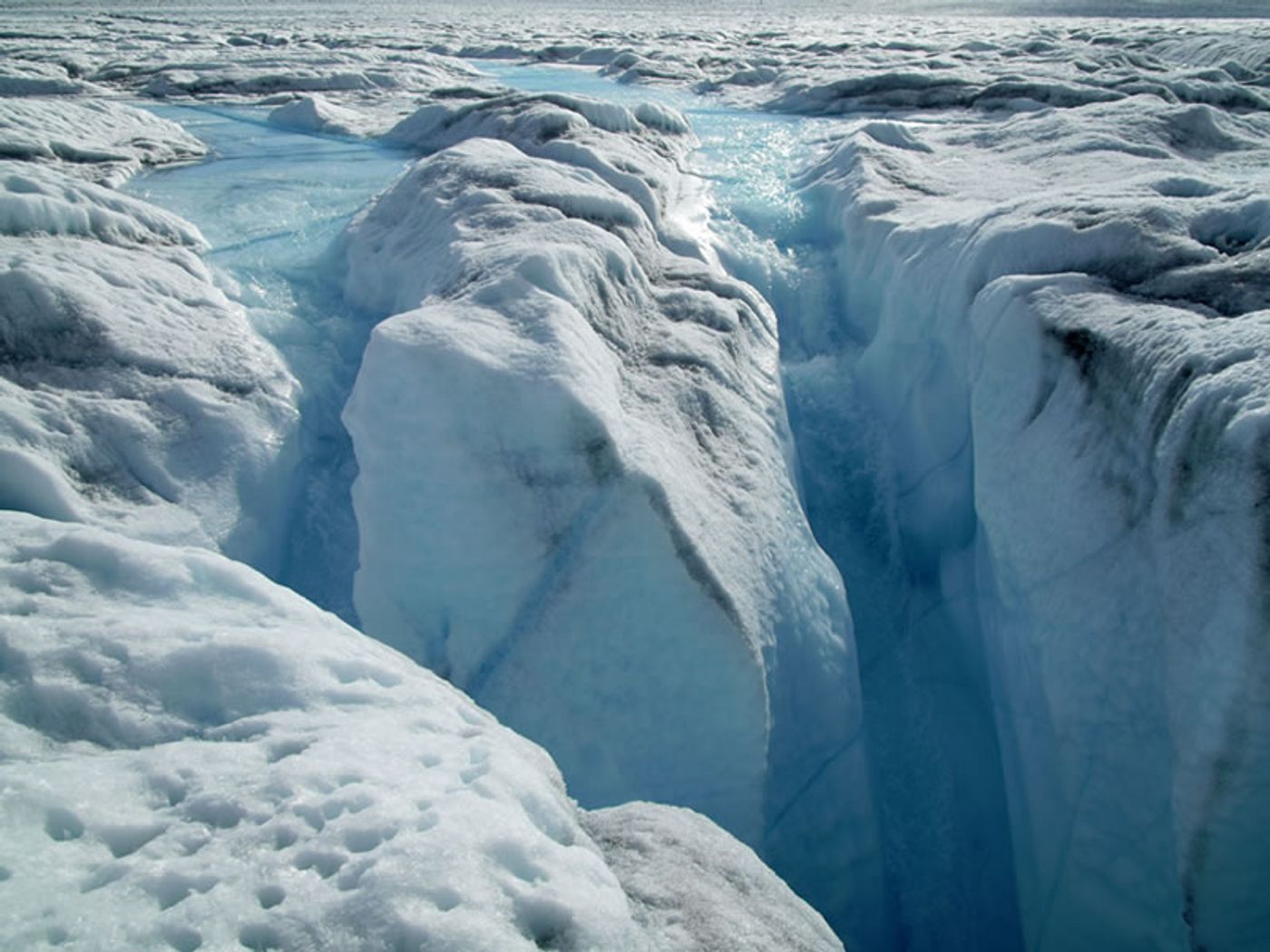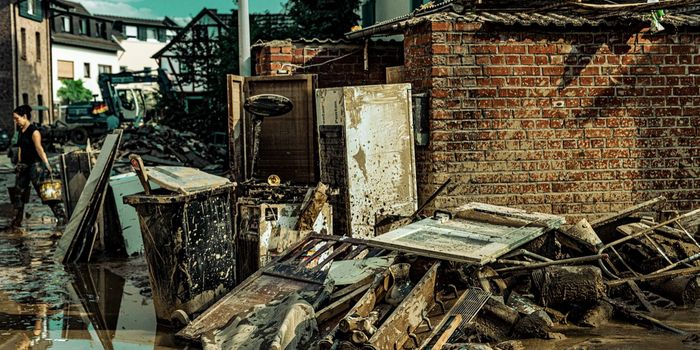Rotten ice in Greenland?
A recent study published in the journal Proceedings of the National Academy of Sciences may change the way we think about Greenland’s ice sheet. Greenland’s is the largest melting ice sheet in the world and the runoff from it has a big influence on sea level rise. Funded by NASA, the interdisciplinary team that collaborated on this study determined that meltwater from the lakes and rivers on Greenland’s glaciers can be caught in what they call “rotten ice” inside the glacier. The scientists say that this discovery changes the way we interpret climate model predictions of Greenland's meltwater.
According to Science Daily, the team used a whole range of tools including satellites, drones, and sensors to track the flow rates of meltwater rivers on the top of glaciers and to map their watersheds. During this process, they discovered that low-density porous “rotten ice” dotted the region’s glaciers, something that previous meltwater models had overlooked in calculations. This discovery later led the team to an even more convoluted surprise: before the water passes through the ice via sinkholes called moulins, it can pool, sit indefinitely or refreeze in porous ice at the surface. This information is significant in understanding the dynamics of meltwater storage and cleared up some previous misconceptions the researchers had.
“We deduced that the disagreement in our data is because of sunlight penetrating into the ice, causing subsurface melting and meltwater storage," said Dirk van As, a co-author of the study. "And now we know this is happening in the higher reaches of the bare ice zone that cover large regions of the ice sheet. We now know that calculation of meltwater retention in porous ice should be included somehow.”
In order to better comprehend this phenomenon of rotten ice trapping water, the team tracked the ice to a depth of three feet below the surface. "Ours is the first independent data-gathering effort to directly measure rates of meltwater runoff from the top of the ice," said Laurence C. Smith, the main author of the study.
This data has the potential to really bring home the point for climate change models. The researchers say that by combining various disciplines (namely, meteorology, oceanography, and hydrology), they have been able to bring new approaches to the field of glacial science.
"We're taking the very mature field of land surface hydrology, which deals with river flow and watersheds on land, and applying it to the ice sheet, which has typically been the scientific domain of solid-ice geophysics," commented Smith. "We have to borrow from hydrology because the ice surface is becoming more of a hydrologic phenomenon. And we can take these tools from another discipline and apply them and actually have a conceptual breakthrough."
The team hopes to continue their research based on data from a trip to Greenland in 2016.
Sources: Science Daily, PNAS









